Рейтинг книг Félix Witting
Начиная изучать творчество писателя - уделите внимание произведениям, которые находятся на вершине этого рейтинга. Смело нажимайте на стрелочки - вверх и вниз, если считаете, что какое-то произведение должно находиться выше или ниже в списке. В результате общих усилий, в том числе, на основании ваших оценок мы и получим самый адекватный рейтинг книг Félix Witting.
-
1.
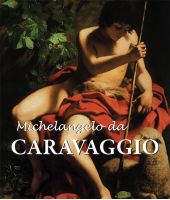 After staying in Milan for his apprenticeship, Michelangelo da Caravaggio arrived in Rome in 1592. There he started to paint with both realism and psychological analysis of the sitters. Caravaggio was as temperamental in his painting as in his wild life. As he also responded to prestigious Church commissions, his dramatic style and his realism were seen as unacceptable. Chiaroscuro had existed well before he came on the scene, but it was Caravaggio who made the technique definitive, darkening the shadows and transfixing the subject in a blinding shaft of light. His influence was immense, firstly through those who were more or less directly his disciples. Famous during his lifetime, Caravaggio had a great influence upon Baroque art. The Genoese and Neapolitan Schools derived lessons from him, and the great movement of Spanish painting in the seventeenth century was connected with these schools. In the following generations the best endowed painters oscillated between the lessons of Caravaggio and the Carracci. ... Далее
After staying in Milan for his apprenticeship, Michelangelo da Caravaggio arrived in Rome in 1592. There he started to paint with both realism and psychological analysis of the sitters. Caravaggio was as temperamental in his painting as in his wild life. As he also responded to prestigious Church commissions, his dramatic style and his realism were seen as unacceptable. Chiaroscuro had existed well before he came on the scene, but it was Caravaggio who made the technique definitive, darkening the shadows and transfixing the subject in a blinding shaft of light. His influence was immense, firstly through those who were more or less directly his disciples. Famous during his lifetime, Caravaggio had a great influence upon Baroque art. The Genoese and Neapolitan Schools derived lessons from him, and the great movement of Spanish painting in the seventeenth century was connected with these schools. In the following generations the best endowed painters oscillated between the lessons of Caravaggio and the Carracci. ... Далее -
2.
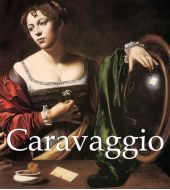 After staying in Milan for his apprenticeship, Michelangelo da Caravaggio arrived in Rome in 1592. There he started to paint with both realism and psychological analysis of the sitters. Caravaggio was as temperamental in his painting as in his wild life. As he also responded to prestigious Church commissions, his dramatic style and his realism were seen as unacceptable. Chiaroscuro had existed well before he came on the scene, but it was Caravaggio who made the technique definitive, darkening the shadows and transfixing the subject in a blinding shaft of light. His influence was immense, firstly through those who were more or less directly his disciples. Famous during his lifetime, Caravaggio had a great influence upon Baroque art. The Genoese and Neapolitan Schools derived lessons from him, and the great movement of Spanish painting in the seventeenth century was connected with these schools. In the following generations the best endowed painters oscillated between the lessons of Caravaggio and the Carracci. ... Далее
After staying in Milan for his apprenticeship, Michelangelo da Caravaggio arrived in Rome in 1592. There he started to paint with both realism and psychological analysis of the sitters. Caravaggio was as temperamental in his painting as in his wild life. As he also responded to prestigious Church commissions, his dramatic style and his realism were seen as unacceptable. Chiaroscuro had existed well before he came on the scene, but it was Caravaggio who made the technique definitive, darkening the shadows and transfixing the subject in a blinding shaft of light. His influence was immense, firstly through those who were more or less directly his disciples. Famous during his lifetime, Caravaggio had a great influence upon Baroque art. The Genoese and Neapolitan Schools derived lessons from him, and the great movement of Spanish painting in the seventeenth century was connected with these schools. In the following generations the best endowed painters oscillated between the lessons of Caravaggio and the Carracci. ... Далее -
3.
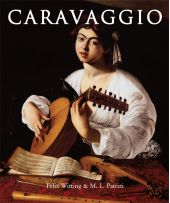 After staying in Milan for his apprenticeship, Michelangelo da Caravaggio arrived in Rome in 1592. There he started to paint with both realism and psychological analysis of the sitters. Caravaggio was as temperamental in his painting as in his wild life. As he also responded to prestigious Church commissions, his dramatic style and his realism were seen as unacceptable. Chiaroscuro had existed well before he came on the scene, but it was Caravaggio who made the technique definitive, darkening the shadows and transfixing the subject in a blinding shaft of light. His influence was immense, firstly through those who were more or less directly his disciples. Famous during his lifetime, Caravaggio had a great influence upon Baroque art. The Genoese and Neapolitan Schools derived lessons from him, and the great movement of Spanish painting in the seventeenth century was connected with these schools. In the following generations the best endowed painters oscillated between the lessons of Caravaggio and the Carracci. ... Далее
After staying in Milan for his apprenticeship, Michelangelo da Caravaggio arrived in Rome in 1592. There he started to paint with both realism and psychological analysis of the sitters. Caravaggio was as temperamental in his painting as in his wild life. As he also responded to prestigious Church commissions, his dramatic style and his realism were seen as unacceptable. Chiaroscuro had existed well before he came on the scene, but it was Caravaggio who made the technique definitive, darkening the shadows and transfixing the subject in a blinding shaft of light. His influence was immense, firstly through those who were more or less directly his disciples. Famous during his lifetime, Caravaggio had a great influence upon Baroque art. The Genoese and Neapolitan Schools derived lessons from him, and the great movement of Spanish painting in the seventeenth century was connected with these schools. In the following generations the best endowed painters oscillated between the lessons of Caravaggio and the Carracci. ... Далее -
4.
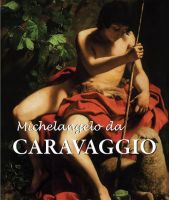 Der zu seinen Lebzeiten als kontrovers geltende italienische Maler Michelangelo Merisi da Caravaggio (1571-1610) hat seinen heutigen Weltruhm als hervorragender Künstler des Barock einer Wiederentdeckung im frühen 20. Jahrhundert zu verdanken. Seitdem sind die Bilder des streitbaren Verfechters der realistischen Malweise geschätzt wie nie zuvor. Zu recht, denn es war Caravaggio, der religiöser Kunst eine neue Menschlichkeit einhauchte, mit seinen realitätsgetreuen und gleichzeitig sinnlichen Bildnissen von Menschen, Heiligen und Göttern. Für Caravaggio galt allein die Schönheit des Naturgetreuen, dass er geschickt mit der von ihm neu „restaurierten“ chiaroscuro-Technik in Szene zu setzen wusste. Dieses Streben brachte ihn auf Kollisionskurs mit den Künstlern und dem Klerus seiner Zeit, die ihm Pietätlosigkeit und einen verruchten Lebensstil vorwarfen. Dieses Buch vereint die Erkenntnisse zweier Caravaggio-Experten, Félix Witting und M. L. Patrizi, und berichtet vom turbulenten Leben und Schaffen dieses genialen Malers. ... Далее
Der zu seinen Lebzeiten als kontrovers geltende italienische Maler Michelangelo Merisi da Caravaggio (1571-1610) hat seinen heutigen Weltruhm als hervorragender Künstler des Barock einer Wiederentdeckung im frühen 20. Jahrhundert zu verdanken. Seitdem sind die Bilder des streitbaren Verfechters der realistischen Malweise geschätzt wie nie zuvor. Zu recht, denn es war Caravaggio, der religiöser Kunst eine neue Menschlichkeit einhauchte, mit seinen realitätsgetreuen und gleichzeitig sinnlichen Bildnissen von Menschen, Heiligen und Göttern. Für Caravaggio galt allein die Schönheit des Naturgetreuen, dass er geschickt mit der von ihm neu „restaurierten“ chiaroscuro-Technik in Szene zu setzen wusste. Dieses Streben brachte ihn auf Kollisionskurs mit den Künstlern und dem Klerus seiner Zeit, die ihm Pietätlosigkeit und einen verruchten Lebensstil vorwarfen. Dieses Buch vereint die Erkenntnisse zweier Caravaggio-Experten, Félix Witting und M. L. Patrizi, und berichtet vom turbulenten Leben und Schaffen dieses genialen Malers. ... Далее -
5.
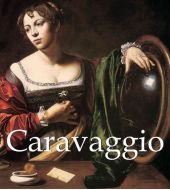 Der zu seinen Lebzeiten als kontrovers geltende italienische Maler Michelangelo Merisi da Caravaggio (1571-1610) hat seinen heutigen Weltruhm als hervorragender Künstler des Barock einer Wiederentdeckung im frühen 20. Jahrhundert zu verdanken. Seitdem sind die Bilder des streitbaren Verfechters der realistischen Malweise geschätzt wie nie zuvor. Zu recht, denn es war Caravaggio, der religiöser Kunst eine neue Menschlichkeit einhauchte, mit seinen realitätsgetreuen und gleichzeitig sinnlichen Bildnissen von Menschen, Heiligen und Göttern. Für Caravaggio galt allein die Schönheit des Naturgetreuen, dass er geschickt mit der von ihm neu „restaurierten“ chiaroscuro-Technik in Szene zu setzen wusste. Dieses Streben brachte ihn auf Kollisionskurs mit den Künstlern und dem Klerus seiner Zeit, die ihm Pietätlosigkeit und einen verruchten Lebensstil vorwarfen. Dieses Buch vereint die Erkenntnisse zweier Caravaggio-Experten, Félix Witting und M. L. Patrizi, und berichtet vom turbulenten Leben und Schaffen dieses genialen Malers. ... Далее
Der zu seinen Lebzeiten als kontrovers geltende italienische Maler Michelangelo Merisi da Caravaggio (1571-1610) hat seinen heutigen Weltruhm als hervorragender Künstler des Barock einer Wiederentdeckung im frühen 20. Jahrhundert zu verdanken. Seitdem sind die Bilder des streitbaren Verfechters der realistischen Malweise geschätzt wie nie zuvor. Zu recht, denn es war Caravaggio, der religiöser Kunst eine neue Menschlichkeit einhauchte, mit seinen realitätsgetreuen und gleichzeitig sinnlichen Bildnissen von Menschen, Heiligen und Göttern. Für Caravaggio galt allein die Schönheit des Naturgetreuen, dass er geschickt mit der von ihm neu „restaurierten“ chiaroscuro-Technik in Szene zu setzen wusste. Dieses Streben brachte ihn auf Kollisionskurs mit den Künstlern und dem Klerus seiner Zeit, die ihm Pietätlosigkeit und einen verruchten Lebensstil vorwarfen. Dieses Buch vereint die Erkenntnisse zweier Caravaggio-Experten, Félix Witting und M. L. Patrizi, und berichtet vom turbulenten Leben und Schaffen dieses genialen Malers. ... Далее -
6.
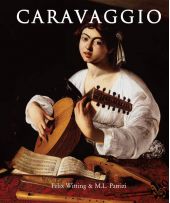 Der zu seinen Lebzeiten als kontrovers geltende italienische Maler Michelangelo Merisi da Caravaggio (1571-1610) hat seinen heutigen Weltruhm als hervorragender Künstler des Barock einer Wiederentdeckung im frühen 20. Jahrhundert zu verdanken. Seitdem sind die Bilder des streitbaren Verfechters der realistischen Malweise geschätzt wie nie zuvor. Zu recht, denn es war Caravaggio, der religiöser Kunst eine neue Menschlichkeit einhauchte, mit seinen realitätsgetreuen und gleichzeitig sinnlichen Bildnissen von Menschen, Heiligen und Göttern. Für Caravaggio galt allein die Schönheit des Naturgetreuen, dass er geschickt mit der von ihm neu „restaurierten“ chiaroscuro-Technik in Szene zu setzen wusste. Dieses Streben brachte ihn auf Kollisionskurs mit den Künstlern und dem Klerus seiner Zeit, die ihm Pietätlosigkeit und einen verruchten Lebensstil vorwarfen. Dieses Buch vereint die Erkenntnisse zweier Caravaggio-Experten, Félix Witting und M. L. Patrizi, und berichtet vom turbulenten Leben und Schaffen dieses genialen Malers. ... Далее
Der zu seinen Lebzeiten als kontrovers geltende italienische Maler Michelangelo Merisi da Caravaggio (1571-1610) hat seinen heutigen Weltruhm als hervorragender Künstler des Barock einer Wiederentdeckung im frühen 20. Jahrhundert zu verdanken. Seitdem sind die Bilder des streitbaren Verfechters der realistischen Malweise geschätzt wie nie zuvor. Zu recht, denn es war Caravaggio, der religiöser Kunst eine neue Menschlichkeit einhauchte, mit seinen realitätsgetreuen und gleichzeitig sinnlichen Bildnissen von Menschen, Heiligen und Göttern. Für Caravaggio galt allein die Schönheit des Naturgetreuen, dass er geschickt mit der von ihm neu „restaurierten“ chiaroscuro-Technik in Szene zu setzen wusste. Dieses Streben brachte ihn auf Kollisionskurs mit den Künstlern und dem Klerus seiner Zeit, die ihm Pietätlosigkeit und einen verruchten Lebensstil vorwarfen. Dieses Buch vereint die Erkenntnisse zweier Caravaggio-Experten, Félix Witting und M. L. Patrizi, und berichtet vom turbulenten Leben und Schaffen dieses genialen Malers. ... Далее -
7.
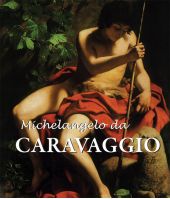 After staying in Milan for his apprenticeship, Michelangelo da Caravaggio arrived in Rome in 1592. There he started to paint with both realism and psychological analysis of the sitters. Caravaggio was as temperamental in his painting as in his wild life. As he also responded to prestigious Church commissions, his dramatic style and his realism were seen as unacceptable. Chiaroscuro had existed well before he came on the scene, but it was Caravaggio who made the technique definitive, darkening the shadows and transfixing the subject in a blinding shaft of light. His influence was immense, firstly through those who were more or less directly his disciples. Famous during his lifetime, Caravaggio had a great influence upon Baroque art. The Genoese and Neapolitan Schools derived lessons from him, and the great movement of Spanish painting in the seventeenth century was connected with these schools. In the following generations the best endowed painters oscillated between the lessons of Caravaggio and the Carracci. ... Далее
After staying in Milan for his apprenticeship, Michelangelo da Caravaggio arrived in Rome in 1592. There he started to paint with both realism and psychological analysis of the sitters. Caravaggio was as temperamental in his painting as in his wild life. As he also responded to prestigious Church commissions, his dramatic style and his realism were seen as unacceptable. Chiaroscuro had existed well before he came on the scene, but it was Caravaggio who made the technique definitive, darkening the shadows and transfixing the subject in a blinding shaft of light. His influence was immense, firstly through those who were more or less directly his disciples. Famous during his lifetime, Caravaggio had a great influence upon Baroque art. The Genoese and Neapolitan Schools derived lessons from him, and the great movement of Spanish painting in the seventeenth century was connected with these schools. In the following generations the best endowed painters oscillated between the lessons of Caravaggio and the Carracci. ... Далее -
8.
 After staying in Milan for his apprenticeship, Michelangelo da Caravaggio arrived in Rome in 1592. There he started to paint with both realism and psychological analysis of the sitters. Caravaggio was as temperamental in his painting as in his wild life. As he also responded to prestigious Church commissions, his dramatic style and his realism were seen as unacceptable. Chiaroscuro had existed well before he came on the scene, but it was Caravaggio who made the technique definitive, darkening the shadows and transfixing the subject in a blinding shaft of light. His influence was immense, firstly through those who were more or less directly his disciples. Famous during his lifetime, Caravaggio had a great influence upon Baroque art. The Genoese and Neapolitan Schools derived lessons from him, and the great movement of Spanish painting in the seventeenth century was connected with these schools. In the following generations the best endowed painters oscillated between the lessons of Caravaggio and the Carracci. ... Далее
After staying in Milan for his apprenticeship, Michelangelo da Caravaggio arrived in Rome in 1592. There he started to paint with both realism and psychological analysis of the sitters. Caravaggio was as temperamental in his painting as in his wild life. As he also responded to prestigious Church commissions, his dramatic style and his realism were seen as unacceptable. Chiaroscuro had existed well before he came on the scene, but it was Caravaggio who made the technique definitive, darkening the shadows and transfixing the subject in a blinding shaft of light. His influence was immense, firstly through those who were more or less directly his disciples. Famous during his lifetime, Caravaggio had a great influence upon Baroque art. The Genoese and Neapolitan Schools derived lessons from him, and the great movement of Spanish painting in the seventeenth century was connected with these schools. In the following generations the best endowed painters oscillated between the lessons of Caravaggio and the Carracci. ... Далее -
9.
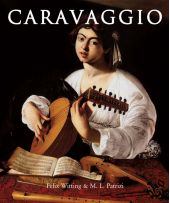 After staying in Milan for his apprenticeship, Michelangelo da Caravaggio arrived in Rome in 1592. There he started to paint with both realism and psychological analysis of the sitters. Caravaggio was as temperamental in his painting as in his wild life. As he also responded to prestigious Church commissions, his dramatic style and his realism were seen as unacceptable. Chiaroscuro had existed well before he came on the scene, but it was Caravaggio who made the technique definitive, darkening the shadows and transfixing the subject in a blinding shaft of light. His influence was immense, firstly through those who were more or less directly his disciples. Famous during his lifetime, Caravaggio had a great influence upon Baroque art. The Genoese and Neapolitan Schools derived lessons from him, and the great movement of Spanish painting in the seventeenth century was connected with these schools. In the following generations the best endowed painters oscillated between the lessons of Caravaggio and the Carracci. ... Далее
After staying in Milan for his apprenticeship, Michelangelo da Caravaggio arrived in Rome in 1592. There he started to paint with both realism and psychological analysis of the sitters. Caravaggio was as temperamental in his painting as in his wild life. As he also responded to prestigious Church commissions, his dramatic style and his realism were seen as unacceptable. Chiaroscuro had existed well before he came on the scene, but it was Caravaggio who made the technique definitive, darkening the shadows and transfixing the subject in a blinding shaft of light. His influence was immense, firstly through those who were more or less directly his disciples. Famous during his lifetime, Caravaggio had a great influence upon Baroque art. The Genoese and Neapolitan Schools derived lessons from him, and the great movement of Spanish painting in the seventeenth century was connected with these schools. In the following generations the best endowed painters oscillated between the lessons of Caravaggio and the Carracci. ... Далее
Комментарии:


